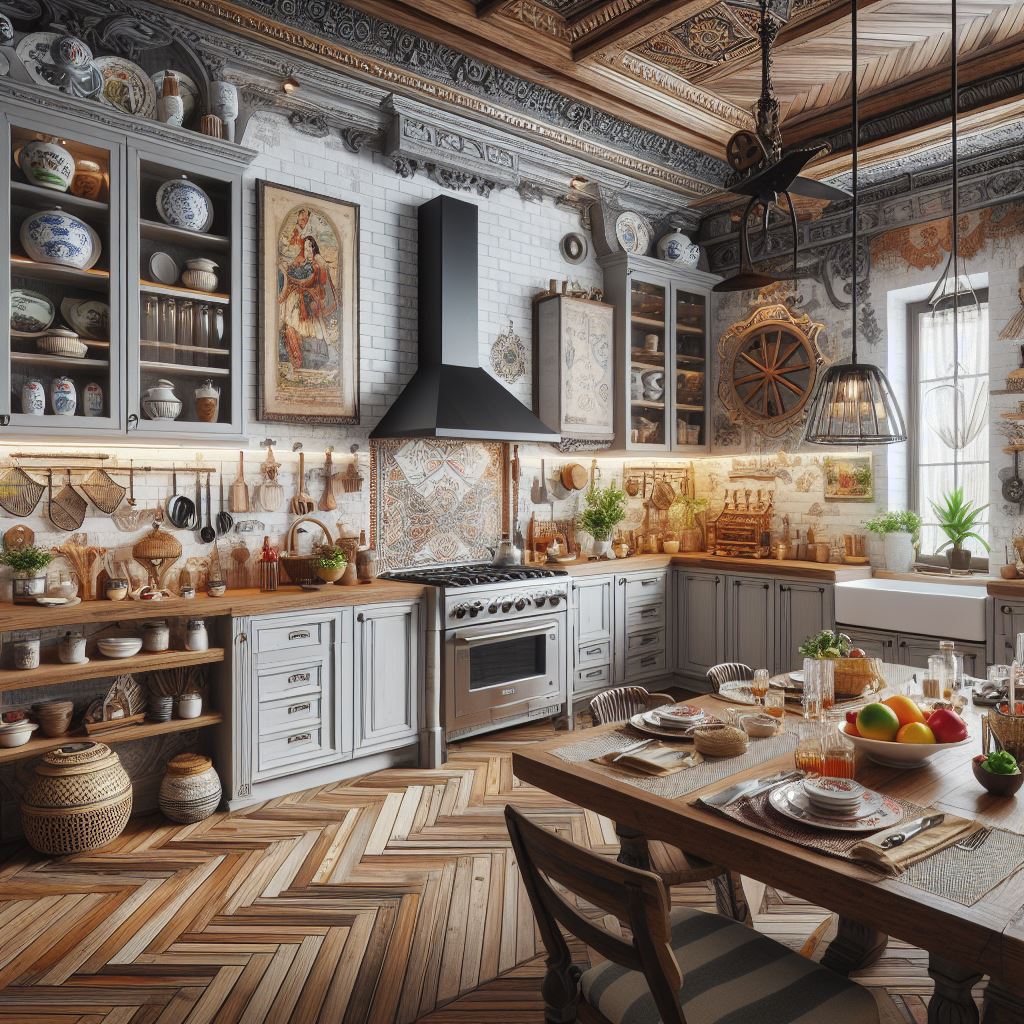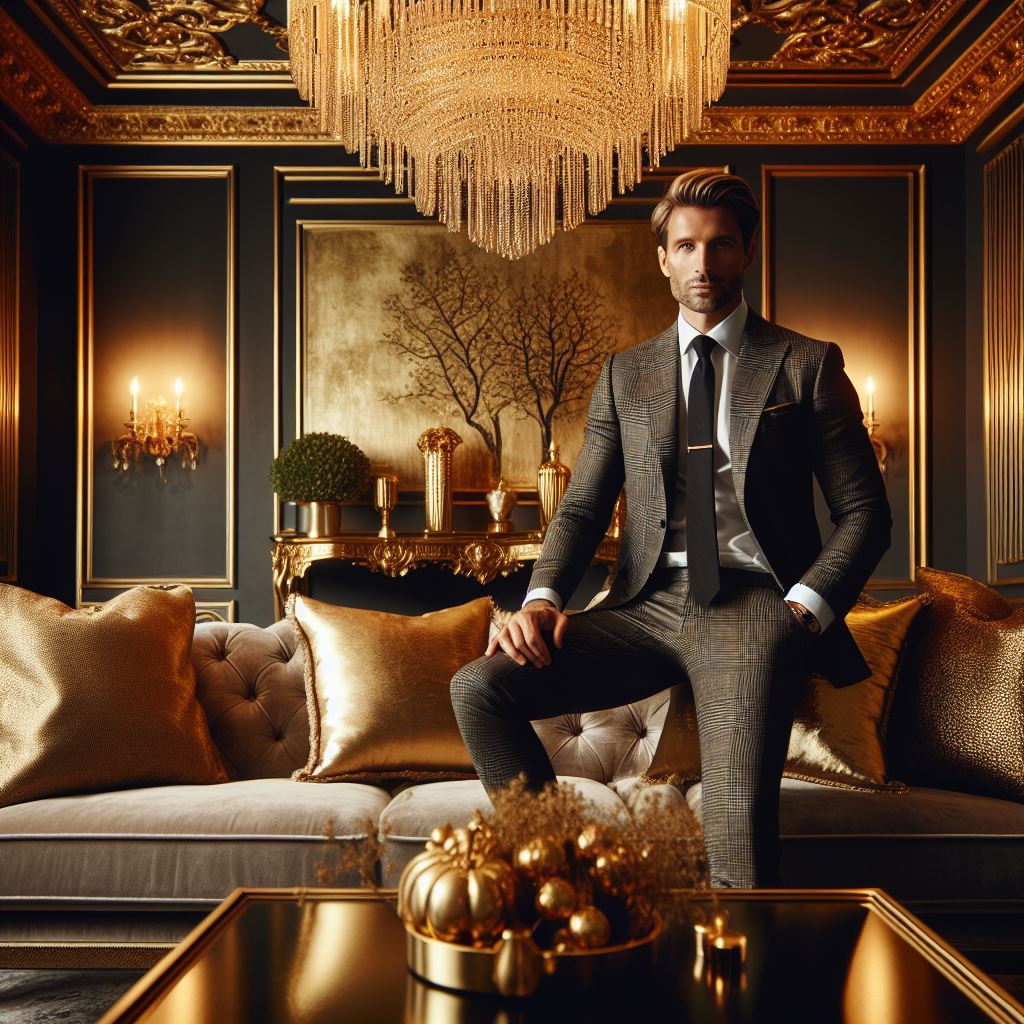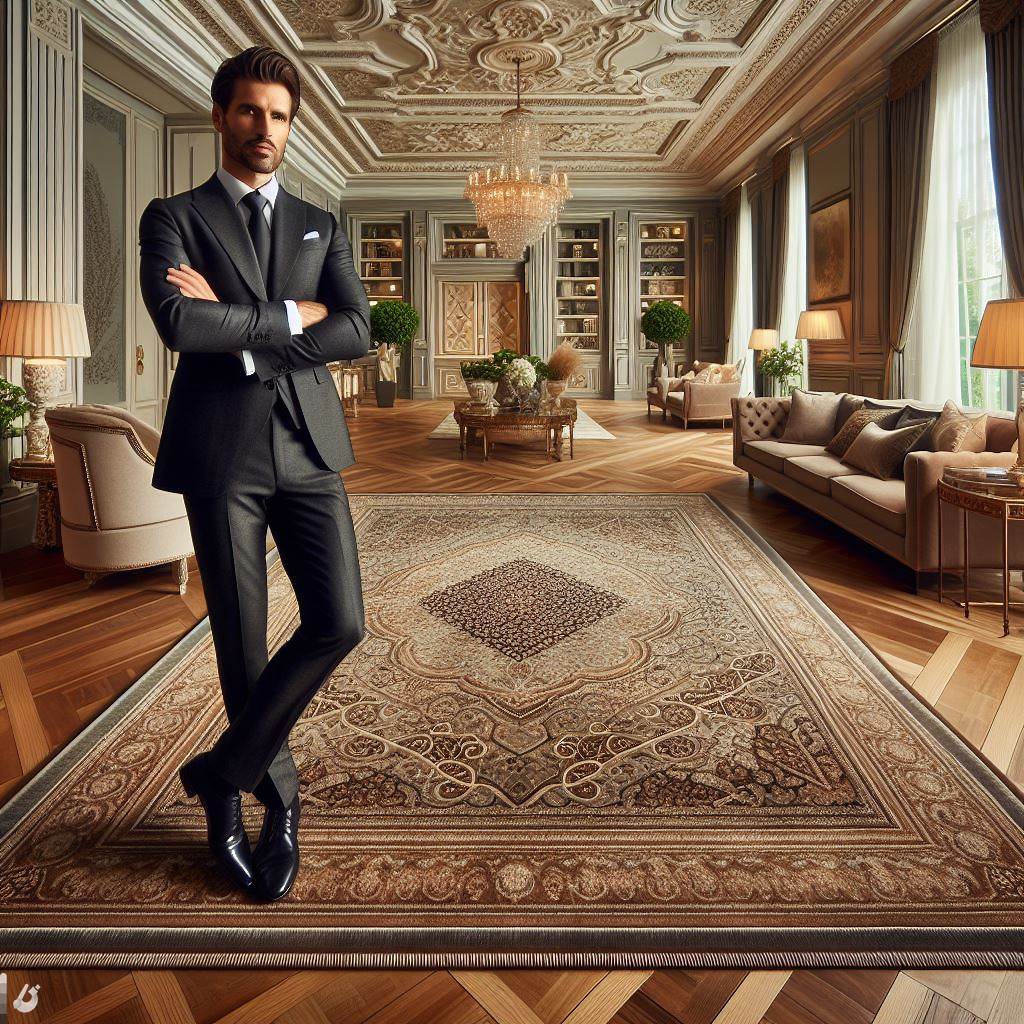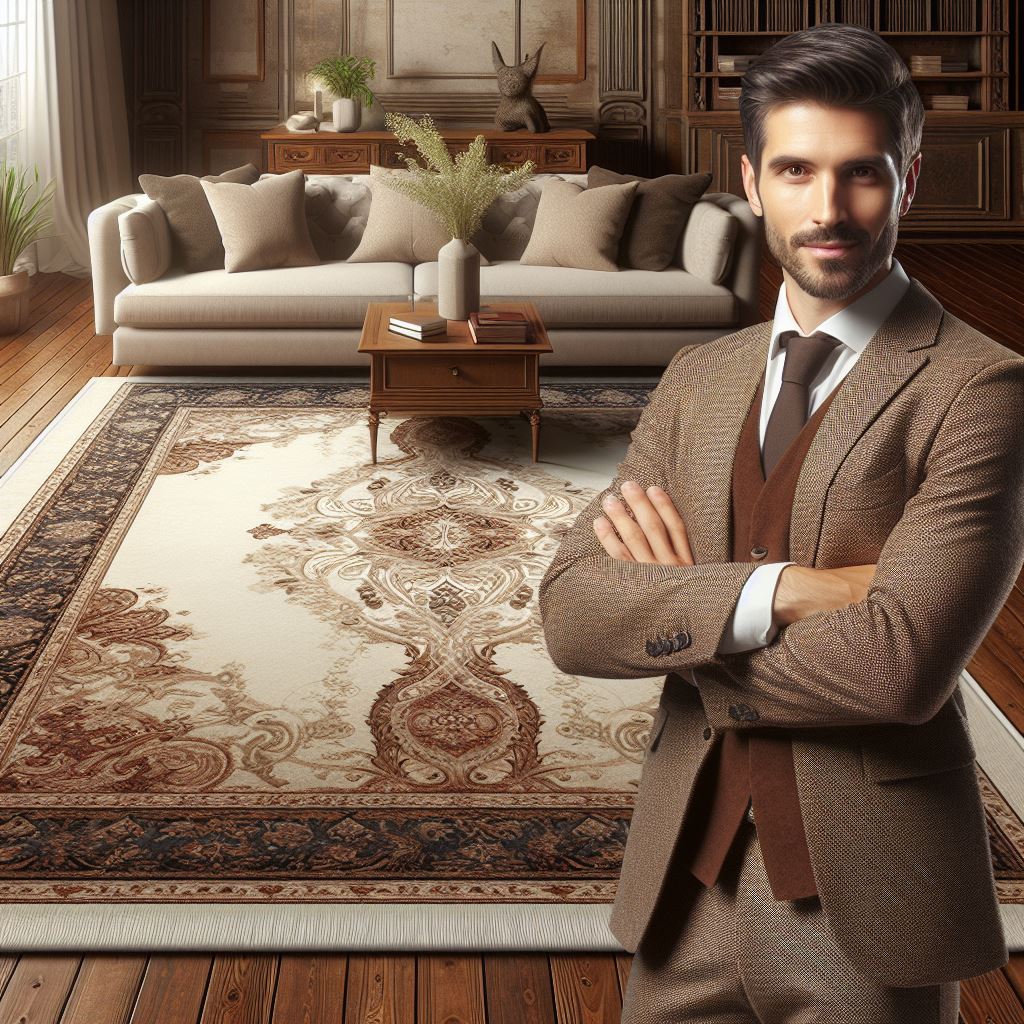Introduction
In the realm of interior design, Fusion Interiors emerge as a captivating blend of East and West aesthetics.
Harmoniously intertwining diverse cultural elements, these spaces captivate the senses, offering a unique tapestry of opulence.
A. Introducing the Concept
- Fusion interiors redefine luxury, seamlessly merging Eastern and Western design philosophies.
- This innovative approach sparks a visual symphony, transcending traditional boundaries of style.
B. Fusion of East and West
- From serene Zen gardens to sumptuous Victorian furniture, fusion interiors embrace the best of both worlds.
- Calligraphy coexists with modern art, creating an eclectic, balanced ambiance that transcends cultural divides.
- The warmth of wooden Japanese screens meets the grandeur of European crystal chandeliers, forming a luxurious visual narrative.
- Silk drapes cascade alongside plush velvet upholstery, marrying textures for a tactile and visually pleasing experience.
C. Focus of the Blog
- This blog delves into the opulent side of Fusion Interiors.
- Unveiling the extravagant synergy between Eastern and Western design sensibilities.
- Discover how Fusion Interiors redefine luxury through a cross-cultural lens.
Embark on a journey where opulence meets cultural diversity, exploring the lavish embrace of Fusion Interiors.
Defining Fusion Interiors
Fusion interiors are a blend of traditional elements from the East with modern Western styles.
These interiors have gained popularity in the design world for their unique and harmonious living spaces.
A. Exploring Fusion Interiors
With fusion interiors, traditional Eastern elements such as bamboo, silk, and ornate carvings are combined with sleek Western furniture and minimalist decor.
The fusion of these elements creates a perfect balance, resulting in living spaces that are both elegant and inviting.
One of the key characteristics of fusion interiors is the use of rich colors and textures inspired by Eastern cultures, paired with clean lines and simplicity of Western design.
These interiors often incorporate elements of nature, such as indoor gardens, water features, and natural materials, to create a sense of serenity and tranquility.
Through the blending of East and West, fusion interiors offer a fresh and contemporary take on luxury living.
B. Creating Unique Spaces
One of the major advantages of fusion interiors is the ability to create truly unique spaces that reflect the owner’s individuality and diverse taste.
By combining different cultural elements, each room becomes a fascinating blend of traditions, creating a conversation starter for guests.
Fusion interiors allow for the incorporation of heirloom pieces or sentimental items from different cultures, enhancing the personal connection to the space.
These interiors also provide flexibility in terms of styling, as they can be easily adapted to different themes or moods, from vibrant and energetic to calm and serene.
C. Achieving Balance
The key to successful fusion interiors is achieving a balance between traditional and modern elements.
The juxtaposition of old and new creates a sense of intrigue and visual interest.
The balance is achieved not only in terms of aesthetics but also in functionality.
By combining the best of both worlds, fusion interiors provide the comfort and convenience of modern living while embracing the beauty and richness of traditional cultures.
Whether it’s a contemporary apartment or a traditional house, fusion interiors can be tailored to suit any space, making them highly versatile.
In essence, fusion interiors represent a unique blend of Eastern and Western design principles.
They have gained popularity for their ability to create harmonious and elegant living spaces.
Through the fusion of traditional elements from the East with modern Western styles, these interiors offer a fresh and contemporary take on luxury living.
By achieving a balance between old and new, fusion interiors provide unique and personalized spaces that reflect the owner’s individuality and diverse taste.
Whether it’s the use of rich colors and textures, incorporating elements of nature, or the flexible styling options, fusion interiors offer endless possibilities for creating truly remarkable interiors.
Read: Rustic Luxe: Blending Styles in Decor
East Meets West: Aesthetic Influences
The fusion of East and West design styles is a growing trend in the world of luxury interiors.
By combining elements from different cultures, designers are able to create unique spaces that are both visually captivating and harmonious.
In this section, we will explore the primary influences from the East, highlight key characteristics of Eastern aesthetics, and delve into the Western influences that contribute to this fusion.
A. Primary influences from the East, such as Chinese, Japanese, and Indian designs
Chinese designs have a rich history that spans thousands of years.
They are known for their intricate details, vibrant colors, and use of natural materials such as wood and bamboo.
The influence of Chinese design can be seen in the use of ornate patterns, lacquered furniture, and delicate porcelain accessories.
Japanese design, on the other hand, focuses on simplicity, minimalism, and tranquility.
The concept of wabi-sabi, which embraces imperfections and the beauty of the natural world, is at the core of Japanese aesthetics.
This influence can be seen in the use of natural materials, clean lines, and neutral color palettes.
Another key influence from the East is Indian design.
Known for its opulence and intricate detailing, Indian designs often feature bold colors, ornate patterns, and luxurious textiles.
The use of vibrant hues, intricate carvings, and decorative elements adds a touch of exoticism to fusion interiors.
B. Western influences, including contemporary styles, industrial elements, and luxury accents
In contrast to the Eastern aesthetics, Western design styles bring contemporary elements to the mix.
Contemporary styles focus on clean lines, open spaces, and a minimalist approach.
This influence can be seen in the use of sleek furniture, geometric patterns, and neutral color palettes.
Industrial elements, another Western influence, add an edgy and urban touch to fusion interiors.
Exposed brick walls, metal accents, and raw materials are common features in spaces that incorporate industrial design.
This style adds a sense of ruggedness and contrast to the overall aesthetic. Luxury accents from the West are also prominent in fusion interiors.
Whether it’s a statement chandelier, a plush velvet sofa, or a striking artwork, these accents bring an element of sophistication and glamour to the space.
They add a touch of indulgence and elevate the overall aesthetic.
In fact, the fusion of East and West design styles in luxury interiors creates a visually captivating and harmonious aesthetic.
The primary influences from the East, such as Chinese, Japanese, and Indian designs, bring intricate details, simplicity, and opulence.
On the other hand, Western influences contribute contemporary styles, industrial elements, and luxury accents.
By blending these influences, designers are able to create unique spaces that truly embody the concept of fusion interiors.
Read: Sustainable Splendor: Green Luxury Realities
Luxury in Fusion Interiors
A. How luxury plays a crucial role in fusion interiors
In the world of interior design, luxury plays a vital role in creating fusion interiors that exude opulence and elegance.
Fusion interiors blend Eastern and Western design elements to create a harmonious and unique aesthetic.
One of the key aspects of luxury in fusion interiors is the use of high-quality, opulent materials.
These materials add a sense of grandeur to the space and elevate its overall look and feel.
Incorporating luxurious elements such as silk, velvet, and precious metals takes the interior design to a whole new level.
These materials not only provide an unmatched visual appeal but also enhance the tactile experience of the space.
From plush silk curtains to velvet upholstery, these luxurious materials are carefully selected and incorporated to bring a sense of richness and sophistication to the fusion interior.
Moreover, the use of precious metals, such as gold and silver, adds an element of luxury and glamour to the design.
These metals can be found in intricate detailing on furniture, decorative accents, and even in the form of statement lighting fixtures.
Luxury in fusion interiors extends beyond the materials used and encompasses the overall ambiance and vibe of the space.
High-end furniture and décor items are carefully selected to create a luxurious dwelling.
B. Incorporation of high-end furniture and decor items to create a luxurious ambiance
The incorporation of designer furniture pieces made from finest woods and adorned with intricate carvings adds a touch of exclusivity to the interior design.
From ornate dining tables to elegantly crafted chairs, these pieces enhance the luxurious aesthetic of the fusion interior.
Furthermore, the use of statement decor items, such as crystal chandeliers, extravagant mirrors, and unique art pieces, elevates the interior design to a whole new level.
These items serve as focal points and enhance the lavishness of the space.
Creating a luxurious ambiance in fusion interiors involves paying attention to even the smallest details.
From carefully selecting the color palette to opting for rich textures, every decision is made with the intention to enhance the luxurious appeal.
The lighting design in fusion interiors also plays a crucial role in adding a touch of luxury.
Soft, warm lighting fixtures create a cozy and inviting atmosphere, while statement chandeliers act as sculptural pieces that exude elegance and grandeur.
In short, luxury plays a crucial role in creating fusion interiors that exude opulence and elegance.
The use of opulent materials like silk, velvet, and precious metals, along with high-end furniture and décor items, creates a luxurious ambiance that is visually stunning and tactically appealing.
The incorporation of these elements brings together eastern and western design elements, resulting in a fusion interior that is both unique and indulgent.
Read: Opulent Lighting: Trends in Luxury Spaces

Balancing Cultural References
A. Challenge of balancing different cultural references in fusion interiors
Combining elements from different cultural traditions can create beautiful and unique fusion interiors.
However, finding the right balance between these references can be a challenge.
It is important to approach this task with cultural sensitivity and understanding to ensure a respectful fusion of traditions.
When designing fusion interiors, it is essential to acknowledge the challenge of balancing different cultural references.
Incorporating elements from various traditions requires a careful selection and arrangement of objects, materials, and colors.
Each cultural reference should be given equal importance and should not overpower one another.
B. Importance of cultural sensitivity and understanding when combining elements from different traditions
Cultural sensitivity plays a crucial role in achieving a successful fusion interior.
It is essential to understand the symbolism, meaning, and significance behind each cultural element that is being incorporated.
This understanding helps avoid misappropriation or misrepresentation of those traditions, ensuring a respectful approach to fusion design.
C. Successful fusion interiors that maintain a respectful approach to cultural fusion
One example of successful fusion interior that maintains a respectful approach is the blend of East and West in Japanese-Mediterranean fusion style.
This style combines the minimalist simplicity of Japanese design with the warmth and vibrancy of Mediterranean aesthetics.
By using elements such as shoji screens, bamboo furniture, and earthy colors combined with Mediterranean influences like ceramic tiles and wrought iron accents, this fusion style creates a harmonious and balanced living space.
Another successful fusion interior that showcases cultural sensitivity is the Indian-Scandinavian fusion style.
This style incorporates the vibrant colors and intricate patterns of traditional Indian design with the clean lines and functional simplicity of Scandinavian aesthetics.
By combining elements such as colorful textiles, carved wooden furniture, and minimalistic furnishings, this fusion style creates a visually striking and culturally rich living environment.
In fusion interiors, it is crucial to avoid cultural appropriation or insensitivity.
Borrowing from different cultures should not be done without understanding and respecting the traditions they come from.
It is essential to engage in proper research and consultation with experts or individuals from those cultural backgrounds to ensure elements are used in a respectful and meaningful way.
Combining cultural references in fusion interiors should always strive to celebrate and embrace the diversity of traditions involved.
It is not about diluting or erasing cultural identities but about creating a harmonious dialogue between different cultures.
By doing so, fusion interiors can become a symbol of unity, respect, and appreciation for the world’s cultural heritage.
To summarize, balancing cultural references in fusion interiors requires a thoughtful approach and cultural sensitivity.
Respect the significance of each incorporated cultural element, understanding its importance actively. Keep sentences concise, under 20 words.
Successful fusion interiors maintain a respectful approach and celebrate the diversity of traditions involved, creating harmonious and culturally rich living spaces.
Creating a Fusion Interior
A. Tips and guidelines for creating a fusion interior that exudes luxury
When it comes to creating a fusion interior that exudes luxury, there are a few key tips and guidelines to keep in mind.
First and foremost, it’s important to strike a balance between East and West influences, blending them seamlessly to create a harmonious space.
Blend cultures with antique Chinese furniture and modern European designs for a unique fusion. Integrate distinct elements seamlessly.
Another tip is to pay attention to the color palette.
Opt for rich, opulent colors like gold, deep reds, and vibrant blues to add a touch of luxury to the space.
Using an eclectic mix of textures and materials, such as silk, velvet, and marble, can also elevate the overall ambiance.
B. Importance of understanding individual preferences and incorporating personal touches
Understanding individual preferences is crucial when creating a fusion interior that exudes luxury.
Each person has their own unique style and taste, and incorporating their personal touches into the space can make it feel more personalized and luxurious.
It’s essential to have open communication with the client or homeowner to understand their specific likes and dislikes.
This can help guide the selection of furniture pieces, color palettes, and accessories that resonate with their personal aesthetic.
By doing so, the space becomes a reflection of their personality and desires, enhancing the overall luxury experience.
C. Practical advice on selecting key furniture pieces, color palettes, and accessories
When selecting key furniture pieces for a fusion interior, it’s important to find pieces that seamlessly blend East and West influences.
Look for furniture with intricate detailing, such as hand-carved wooden Chinese cabinets or a sleek European sofa with clean lines.
When it comes to color palettes, consider using a neutral base and adding pops of color through accessories.
This allows the furniture and statement pieces to take center stage while adding visual interest through vibrant accents.
Accessories play a crucial role in achieving a luxurious fusion interior. Opt for statement pieces like large chandeliers or handmade rugs to create a sense of grandeur.
Mixing and matching different styles and textures can add depth and visual interest to the space.
In review, creating a fusion interior that exudes luxury requires a thoughtful combination of East and West influences.
By understanding individual preferences and incorporating personal touches, the space becomes a reflection of the homeowner’s unique style.
By carefully selecting key furniture pieces, color palettes, and accessories, a fusion interior can truly come to life, showcasing opulence and sophistication.
Read: Elegant Eco Estates: Where Luxury Goes Green
Case Studies – Showcasing Fusion Interior Designers and Projects
A. Renowned Fusion Interior Designers
- Kelly Hoppen – Known for her sleek and sophisticated fusion interiors.
- Nate Berkus – Expert in blending Eastern and Western design elements seamlessly.
- Martyn Lawrence Bullard – Known for his eclectic and luxurious fusion interiors.
B. Exemplary Fusion Interior Projects
- The Mumbai Mansion: A perfect blend of Indian aesthetics with contemporary Western designs.
- The Tokyo Loft: Showcasing a fusion of minimalistic Japanese style and modern Western elements.
- The Istanbul Bazaar: A vibrant fusion interior that combines the rich textures of the East with Western comfort.
Before and After: Witness the Transformative Power
The Mumbai Mansion underwent a remarkable transformation, with the fusion design creating a harmonious blend of opulence and modernity.
The Tokyo Loft project showcases how fusion design can create an airy and serene space combining minimalism with luxurious comfort.
Witness the vibrant transformation of the Istanbul Bazaar, where fusion design brings together the traditional and contemporary with a burst of colors.
Fusion interior design is a captivating blend of Eastern and Western aesthetics, creating unique spaces that reflect a harmonious coexistence of different cultures.
Renowned designers like Kelly Hoppen, Nate Berkus, and Martyn Lawrence Bullard have mastered this art, demonstrating their expertise in fusing the best of both worlds.
Through remarkable projects like the Mumbai Mansion, Tokyo Loft, and Istanbul Bazaar, we witness the transformative power of fusion interiors, as they create spaces that are simultaneously timeless and contemporary.
The before and after photos speak volumes about the immense potential of fusion design, showcasing how it has the ability to turn ordinary spaces into extraordinary havens of luxury.
Embracing fusion interior design opens doors to unlimited possibilities, allowing homeowners to express their unique style while embracing the beauty of cultural diversity.
Conclusion
Fusion interiors provide a unique and appealing approach to luxury design.
By combining elements from both Eastern and Western cultures, these interiors offer a one-of-a-kind aesthetic that is both elegant and sophisticated.
The blog post has highlighted the key aspects of fusion interiors, including the use of materials, color schemes, and furniture to create a harmonious blend of styles.
It has also emphasized the importance of personalization and how fusion design allows individuals to create their own luxurious living spaces that reflect their unique tastes and preferences.
All in all, fusion interiors offer a fresh and exciting alternative to traditional luxury design, making them worth exploring for those seeking to create a truly individual and luxurious home.
So why not delve into the world of fusion interior design and discover the endless possibilities it offers for creating your dream luxury living space?




